An interview with the Oscar-winning production designer from newly published book Production Design.
The production designer of films such as Jurassic Park, War Horse and Avatar talks about his work in this excerpt from Production Design, a FilmCraft book written by Screen contributor Fionnuala Halligan and published by Ilex.
The book’s other interviewees include Ken Adam, Jim Bissell, William Chang, Stuart Craig, Nathan Crowley, Dante Ferretti, Jack Fisk, Sarah Greenwood, Eve Stewart and Dean Tavoularis among others.
Born in 1952, Rick Carter grew up in Los Angeles surrounded by the movie industry—his father was a publicist for the actor Jack Lemmon—but took a while to come to the world of film himself. A conscientious objector to the Vietnam War, he dropped out of the University of California at Berkeley and eventually entered the art department for the first time as an assistant on Hal Ashby’s Bound for Glory (1976), followed by James Bridges’ The China Syndrome (1979). His first credit as art director was with Ashby again on Second-Hand Hearts (1981), but art-directing The Goonies in 1985 was a pivotal job for the designer, as it led to another key meeting for Carter: with that film’s writer and producer Steven Spielberg. The two hit it off and began a close working relationship that endures to this day.
While Carter’s first credit as production designer was on Francis Veber’s The Three Fugitives (1989), it was Spielberg’s TV series Amazing Stories (1985–87) that cemented their relationship and also led to an encounter with Robert Zemeckis. Carter proceeded to work exclusively with Spielberg and Zemeckis for the next 20 years, on everything from Back To The Future Part II and Part III (1989 and 1990), and Death Becomes Her (1992) to Jurassic Park and its first sequel The Lost World (1993 and 1997), Forrest Gump (1994), Amistad (1997), What Lies Beneath (2000), Cast Away (2000), A.I. Artificial Intelligence (2001), The Polar Express (2004), War of the Worlds (2005), and Munich (2005). Carter then took up the three-year challenge that was the giant, ground-breaking production of Avatar (2009) for another Hollywood titan—James Cameron—and his most recent credits are Sucker Punch (for director Zack Snyder, 2011), and War Horse (2011) and Lincoln (2012), both for Spielberg. Carter has been nominated twice for an Academy Award. The first time was for his work on Forrest Gump in 1994, and he won the Oscar for Art Direction for Avatar in 2010 (an honor he shared with Robert Stromberg).
“When the word journey comes up, it’s quite real to me. Almost all the movies I’ve done have been travel/journey films; nobody ever stands still in them. These themes are not something I’ve picked; it seems like these movies have picked me. Robert Zemeckis, Steven Spielberg, then Jim Cameron—they came to me when they had these types of stories to tell. I don’t think they knew anything specific about my background, but there must be something about who I am and my generation that’s reflected in these films.
I was a conscientious objector to Vietnam. I was up at the University of California in Berkeley in the late 1960s and there was a lot of political rioting and turmoil. At a certain point it became more than I could psychologically or spiritually handle, and I dropped out and traveled the world for over a year by myself. I wanted to go out and find something deeper that could give some purpose to my life. At the end of that year, it already felt like I’d been traveling for three or four years—but it turned out that traveling, both physically and visually, has become the fundamental motif for my entire life thus far.
My training is not formal and I came into production design as a painter. My father worked in Hollywood as a public relations man with Jack Lemmon—he even produced a movie that Jack Lemmon directed (Kotch, 1971). So I grew up around Hollywood and the way Hollywood worked, at the core of superstardom. I really didn’t think I wanted anything to do with it; that really bright intense light of living like that. So I left. I’d always been an artist from a young age, and after I came back from my travels, I was in New York trying to make my way as a portrait painter. But it was so solitary and not collaborative, and it turns out that’s one of the things I enjoy the most. Trying to bring out the best in everyone I work with brings out the best in me.
So I got to wondering what an art director does in Hollywood because it had the word “art” in it. I guessed it was something to do with hanging pictures. And my dad said, “Well, I’ll introduce you to a production designer if you come back to Los Angeles.” Richard Sylbert was the designer and he became a mentor—I listened to him talking about production design and I realized it was a conceptual space.
I guess the thing that you fear the most when you’re young in this business is that you will never know enough to achieve what it is you’re being asked to do. I remember Richard Sylbert describing it and—to use a metaphor—he could compose the music and he could play instruments and he could conduct the orchestra, he could do all the jobs that it took to be in the art department and create a vision for the movie. My only response at the time was the best I could do was become an air guitarist like Joe Cocker. It seemed you needed to be a great illustrator, a great architect, a great decorator in order to make it and I had none of that and I still have none of that. All I do is bring myself to it as an artist.
I’ve never forgotten my background in fine art and painting, and expressing my deepest emotions directly—I’ve never lost sight of that in what I do. I’m always a blank canvas. I don’t know how to do it or what it even is. I have to see it and feel it in the way I would start a painting. Then I reflect that back to the directors I work with and give them a sense of what I think it is, this world in which their narrative takes place, and they help guide me, just as I am simultaneously guiding them.
Over the years, I discovered that even the people who are considered the most “inside” in Hollywood are also outsiders. Even though I grew up around it, I felt like an outsider in Hollywood, and Steven Spielberg is very much an outsider—he’s a very other type of person. His sensibilities are not the norm. He can be so literal and so poetic at the same time.
The first time I met him was when I was art director on The Goonies (1985), and the production designer, J. Michael Riva, had gone off on a location scout with the director Richard Donner and I was back in Los Angeles tending to the stages (we had eight stages in which the story unfolded until you reached the pirate ship). Steven, who had written the story and was producing with Kathleen Kennedy, wanted to see the sets so I took him on a tour that went in order. And I think there was something in the way I presented the through lines of what we were doing that maybe caught his attention, that I wasn’t just interested in the physicality of what we were showing, but its function in the movie. And from my angle, I thought he had a voice that was so strange, the timber of it felt kind of otherly.
He used to speak very, very literally, never metaphorically or philosophically. I was fascinated that his movies could be so lyrical and poetic, but his way of describing what he wanted was always so literal.
This challenged me and I remember one of the first jobs I had with him directly was on Amazing Stories (1985–87) where I designed a train that comes through a house. And he told me the minimal amount of train he needed for the shots, he was being very cost-conscious. I heard what he was saying, but then as I got into what I thought he wanted for the scene, I gave him a little more and I found a way to do it where it wouldn’t cost more money. This led to a kind of dialogue and, when I did all the Amazing Stories, he saw a wide range of my interpretations of his ideas.
It was through Amazing Stories that I met Bob Zemeckis and, whereas Spielberg is older, Robert Zemeckis is younger than I am; so I was like the middle guy between these two incredibly powerful, young directors. But I realized at a certain point that they’d never been out into the world and I had. And the metaphors I was drawing upon as I started getting more involved in the images allowed for a dialogue to develop between us at a time when we were all bringing ’ something to the table. I know when I talk to Spielberg the one thing I have to do is tell him the establishing shot of the concept I am thinking about—orient him. Literally, this is what it is, but here is what I think it means and where we can go with it. I need to be able to answer the question he’s going to ask me—and has asked me twice—when I have brought him to locations without telling him clearly what this scene is for and he will say, “What am I looking at?” If you’re talking to one of the visualists of our times and he asks you that, you must not be intimidated by the question. It’s fundamental for any production designer to be able to be clear about what it is they want you to see.
When I started out I would go around the back of sets and see how they were constructed, all these straight lines—I thought it was amazing, a marvel, so orderly. It was a mystery to me. Well, it turns out the very deficit I have about not having a learned knowledge about that craft means that I have to run it through an instinctive barometer in my head to try to understand it. Turns out I’m really good with common sense—how you build something, how you budget it, how you know whether it’s going to work or not.
I’ve been forced to admit mistakes and I’ve even been fired—although fortunately that happened early on in my career—and I’ve changed my point of view when I needed to. That all just opened me up so when I encountered the digital realm and that way of making things, I took it on board—it was just another environment where I don’t know how to do it. But I learned how to do it in order to understand the parameters that are being presented and how to go beyond those parameters.
Maybe by now you can tell I’m pretty trippy, but I also get things done. I hit the marks. As the person who stages the scene, whether it be physically or digitally, you must provide for this train that’s coming down the track, because it is going to eat up the track and you have to keep track in front of it. And that’s no joke—that’s getting up at 5am and being in before everyone arrives. I’ve worked out that Spielberg, for example, he’s like the shark in Jaws (1975)—he makes his decisions instinctively, often very quickly in the moment, and when he does, you have to keep moving. Problems come up, but your main focus is not to get stalled. All the directors I’ve worked with can intuitively smell static chum in the water and you better make sure you don’t have a leg dangling in there. The show must go on—you must provide. But at the same time, if that’s all that fuels you, it’s going to be hard to get up out of bed in the morning, especially as you get older.
Some of the production designers of my generation have gotten away with not being able to draw—movies in the 1970s were being made on the road, and you could just get into it. I’m more of a collage artist in that’s how I can sometimes best inspire the imagery of the movie. But the ones who have lasted three or four decades have been able to adapt to the evolving language of cinema. Now we’re not just here on stage, like Cameron Menzies did it, or on location, which is where Richard Sylbert’s generation took it. He said to me: “Kid, it looks like you’re going into the digital realm.” I was fortunate to be there when Steven Spielberg said to the guys at ILM, “Go ahead and spend $500,000 and put the skin on the dinosaurs and let’s see what it can do.” That changed things. But there was the need first, because of the stories, and the same thing for Avatar (2009) when technology wasn’t there but the need was—and when those two things come together it’s very powerful.
The directors I have worked with are all strong personalities. With Zemeckis, you’re talking to Doc Brown and what you want to do is stimulate him so he goes into overdrive and you want him to discover a new flux capacitor. And Cameron has his particular way of setting up this huge appetite for exploration. And as his expedition gets more and more complex and daunting, he says, “Well, the mission is expanding.” And that’s why his movies become so big. You’re in survivalist mode when you’re doing one of his films.
These days there is a new generation of artists like Robert Stromberg who was a visual effects designer and matte painter. On Avatar, I realized his time had come to become a production designer, like Doug Chiang on The Polar Express (2004). Because they could provide and realize so much. As a production designer I’ve shared the credit three times and it’s always been my decision to do that, because it’s what’s right for the movie. I make it clear to the director who is doing what work, so they can go directly to somebody in the art department. I’ve found over the years that I don’t want to be in the Klieg light—there’s enough light in the reflected light that comes off those Klieg lights focused on Spielberg, Zemeckis and Cameron. So I’m not territorial, and I’m not selling architecture, I’m not selling decoration. I’m seeing and realizing the image. The very fact that it is designed, literally, not to be seen, means it takes a certain type of person. Perhaps it’s best described as a magician’s illusion. You’re looking right at it, but if you are aware of it, it means you are not suspending your disbelief. Admiring it is a very distant cousin to believing it.
Territorially some production designers of this era feel threatened by the visual effects supervisors who now come in and want to have a big role in the pre-visualization of the movie. Because it’s something the art department has traditionally developed over the years in the past and we have an important and central role in its development. But if I’m trying to control it territorially I’m going to lose it. By embracing the collaborative nature of all people, there’s always a place for production design to keep it all coherent, both in terms of visualization and the workflow. That’s my job, to be a visual guide, cheerleader and choreographer toward keeping things going to be successful. I need to bring out the best in what we all do and that’s why I get asked back. I don’t mean that in an arrogant way, but that’s something I’ve come to understand—that’s my part in the process. If there’s no concept there I can bring a lot to the table, if there’s a great concept, I can work with that. I don’t need it to be all mine. It isn’t anyway, because of the fundamental collaborative nature of moviemaking.
My primary job is to create a space—physically or digitally—that inspires the spirit of a creative artist within the director, the cinematographer, and the actors. And I go back to my travels all the time to do that—the line is quite blurred. So the journey has been ongoing, and without even realizing it, the last six films I’ve made have been about war, grappling with what faced my generation at that time through widely different stories about armed conflict.
I think that the cinematic visions of Steven, Bob and Jim, in particular of this generation of filmmakers, are very reflective of what happened in the late 1960s in seeking transcendent experiences that are above and beyond the norm and seeing into things that are right in front of you. For me, there’s an expressive progression to our whole body of work together.
When I worked on The Goonies, I realized that I was doing a job that as a ten-year old I would have liked: I was being paid to be a swashbuckler. And I’ve never lost that sensibility on my travels. When I did War Horse (2011), I identified with that whole sense of having been through a lot and not having fundamentally lost my innocence or my desire to wear my heart on my sleeve. If someone wants to ridicule that, I understand, that’s what life does to you—but it hasn’t done it to me and it hasn’t done it to Steven, and it hasn’t done it to Bob or Jim, and one of the amazing things is that’s what cinema’s life of exploration has provided to all of us.




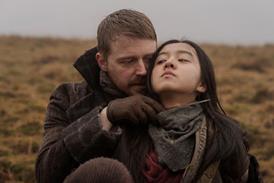

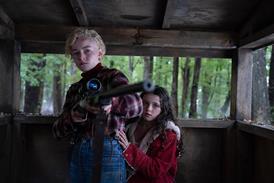

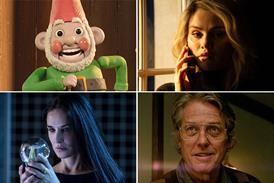
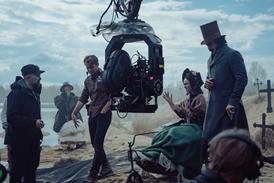


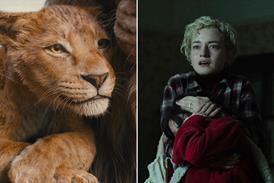
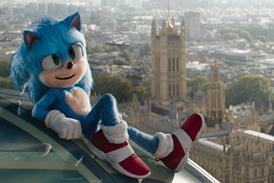
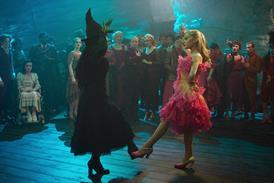
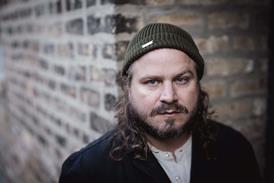




No comments yet